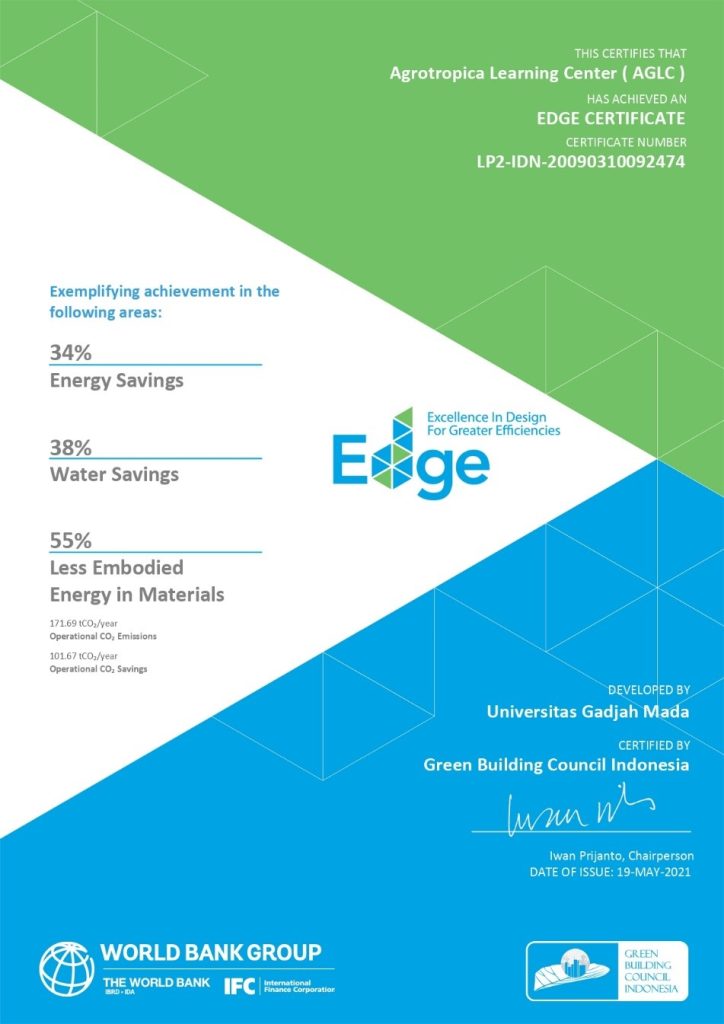UGM has ten buildings certified as green by the Green Building Council Indonesia (GBCI), with certifications at the Platinum and Gold levels.
Among the certified buildings are the SGLC and ERIC buildings in the Faculty of Engineering.


Figure 1. The Engineering Research Innovation Center (ERIC) obtained a Gold certification from GBCI with a total of 18 points in the Energy Efficiency and Conservation (EEC) category.


Figure 2. The Smart and Green Learning Center (SGLC) obtained a Platinum certification from GBCI with a total of 26 points in the Energy Efficiency and Conservation (EEC) category.
As many as 16 buildings have also received Green Building certificates from EDGE IFC World Bank, including the Animal Science Learning Center (ASLC) and Agrotropica Learning Center (AGLC).


To achieve these certifications, buildings must undergo final-stage recognitions and surveys by UGM’s Green Campus Team. These certified 11 new buildings are demonstrating compliance with environmentally friendly design and construction practices. This certification process involves developing policy documents, action plans, and implementation strategies to ensure sustainability in campus infrastructure (Insgreeb for PIU UGM Green Buildings).
The green building certification meets the sustainable standards in terms of the following:
- Energy efficiency and conservation. Focus on reducing energy consumption through technology and design innovations, ensuring that energy use aligns with sustainable practices where reduction of carbon footprints and operational energy demands are prioritised.
- Water Efficiency. Emphasise responsible water management, aiming to reduce consumption and recycle water where possible.
- Materials and Resources. Prioritising materials that reduce embodied energy and promote sustainability across the supply chain.
- Indoor Environmental Quality. Aim to enhance human comfort and health by maintaining high-quality indoor environments.
- Waste management. Encourage minimising landfill waste and repurposing materials to reduce environmental impact.
- Sustainable Site and Design. Ensure that buildings harmonise with their natural and urban surroundings.
- Monitoring and performance metrics. Rely on data-driven approaches to verify performance and continuous improvement.
As for existing buildings, in accordance with Rector Regulation Number 157 of 2020, UGM mandates that all renovations (and new constructions) follow stringent energy efficiency standards. Impact. This regulation establishes standards and technical guidelines for the planning, construction, renovation, and maintenance of buildings on the UGM campus. Its purpose is to ensure that every building meets criteria for safety, comfort, energy efficiency, and aesthetics in alignment with the university’s vision and mission.
References:
